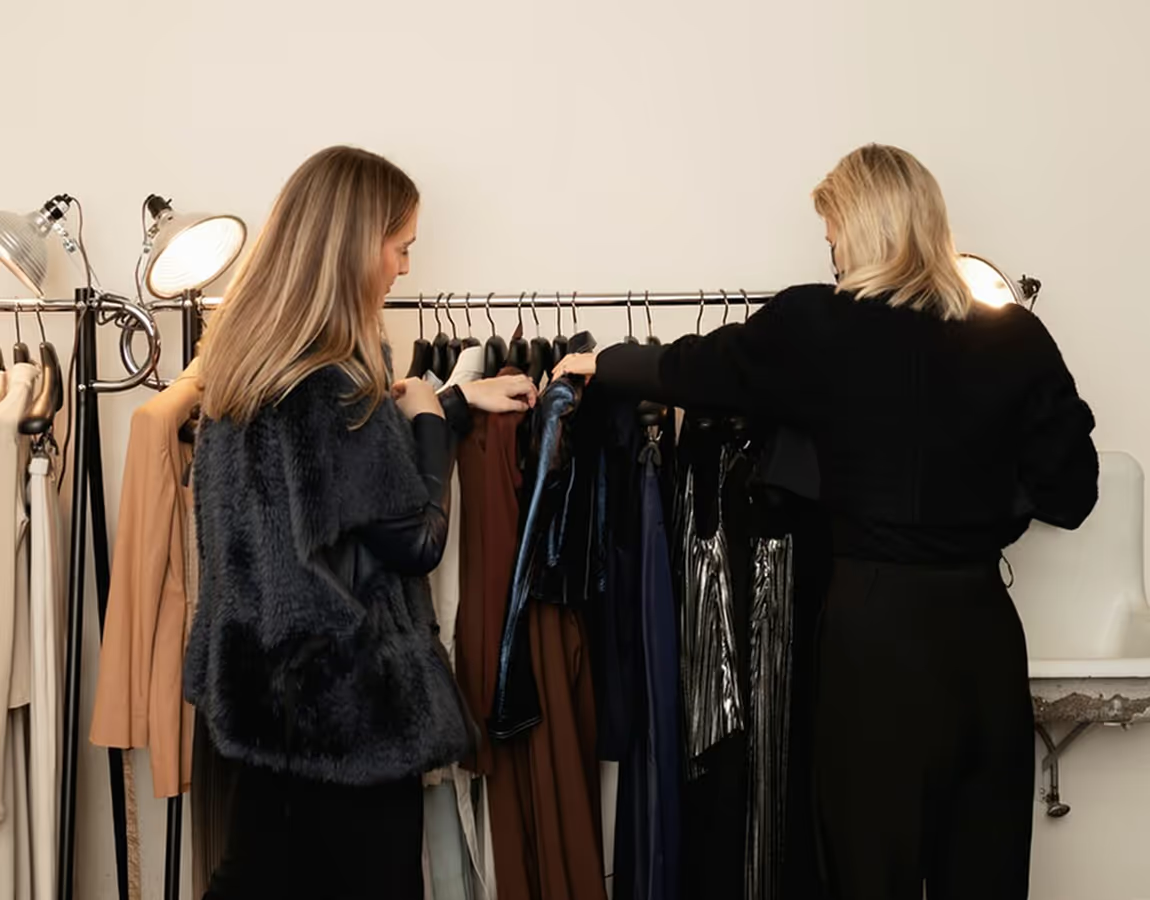
By Ann Wehren, CEO of In-Seam
Over 20+ years in the industry, I’ve seen firsthand how the luxury retail landscape is transforming dramatically. Personal shopping isn't just a trend—it's becoming essential in this evolving market, and the data shows us why.
Why personal shoppers?
Top luxury clients simply don't have time for traditional shopping anymore. They're busy running their families, their companies, and their foundations. Shopping is just another task on their endless to-do list. What they need above all else is convenience, and that's exactly what personal shoppers and stylists provide.
In today's overwhelming retail environment, personal shoppers act as trusted guides who cut through the noise. They've become "connectors" who are invaluable advisors because they truly understand their clients' tastes and lifestyles. I've seen, and data proves, that the majority of true-luxury clients actually develop more loyalty to their personal stylist or stylist advisor than to any specific brand. Why? Because they rely on them for everything—recommendations, acquisition, styling, and ongoing support after purchase.
“I am more loyal to my advisor than to the brand” – 64% of Very Important Customers (VICs)*
This study found that in the West, VICs look for the following in their relationship with their advisor:
- Impeccable service
- Ability to anticipate needs
- Friend-like relationship
What brands and retailers need to recognize is that personal shoppers are actually a distinct and incredibly valuable customer segment in their own right. In 2022, the top 2% of luxury customers accounted for 40% of overall sales, and this VIC-driven market share has only grown since then. Personal shoppers directly influence these spending decisions. They essentially control the "wallet capture" of high-net-worth clientele, particularly in the U.S.
This is why smart brands are beginning to court personal shoppers specifically. When they service this valuable segment properly, they're effectively reaching dozens of high-value customers through a single relationship. Personal shoppers' recommendations carry significant weight—their clients trust them to guide them through the overwhelming array of options and curate selections tailored to their individual preferences. This trust translates directly to sales.
Forward-thinking brands are now implementing strategies specifically to engage with personal shoppers:
- Creating dedicated programs
- Offering special access to collections
- Providing enhanced communication channels
- Tailoring their technology to support their workflow
They understand that personal shoppers aren't just intermediaries; they're powerful influencers in the luxury ecosystem.

Understanding the modern VIC
As Katie Hobbs, Co-Founder of Cara Cara, noted about typical VIC clients, they're "women who are super-qualified to shop our prices and have great taste, but don't have time to shop."
Another consideration that’s important for brands to realize is the missed opportunity of not reaching the valuable clients who only shop with personal shoppers and may never interact with your brand if you are not catering to their personal shopper. A powerful example of this behavior is the client profile representative of customers who have no time or desire to attend brand events targeted to them.
Understanding your client profile and what will motivate them to create lasting loyalty to your brand is essential. Just as essential is understanding the power and value of the third-party client advisor, particularly in catering to them with the same special access offerings you may extend to an end-client.
The luxury market is moving toward a highly curated, relationship-driven model that could soon represent over 70% of luxury transactions. The "1:1:1 model"—store to shopper to customer—puts personal shoppers at the center of the luxury ecosystem. Brands and retailers who recognize them as a vital customer segment and invest in servicing their needs will gain access to the most valuable clientele in the market. The future clearly belongs to those who can create meaningful connections in an increasingly complex retail world.
The future clearly belongs to those who can create meaningful connections in an increasingly complex retail world.
Why is curation critical in fashion retail?
In a retail environment saturated with endless options, effective assortment and expert curation are essential for cutting through the noise and catering to the needs of affluent, time-poor consumers. Too much choice can lead to decision fatigue, and offering the same products across multiple platforms dilutes the sense of exclusivity.
Personal shoppers excel at curating selections tailored to individual preferences, guiding clients through vast product ranges, and offering personalized recommendations. This individualized approach is highly valued and often leads to significantly higher sales and AOV compared to generic B2C retail experiences.

How can brands acquire high-value clients who use personal shoppers?
E-commerce brands and retailers can adopt several strategies to attract personal shoppers and their high-value clients:
- Recognize the role of the personal shopper as a new customer segment to be marketed to and develop a plan to attract, service, and foster this segment.
- Create an omnichannel approach to CX beginning with accurate customer tagging and attribution of personal shoppers vs. their clients. Document a plan and train your team to implement consistent service across channels.
- Consider the perks and programmatic offerings to attract personal shoppers. Consider facilitating consignment options, earned commission tiers, in-store appointments, product knowledge sharing, and dedicated CX contacts and channels.
Assortment, individual curations, privacy, and personalized communication are not just for the 1%; harnessing the power of an attentive, knowledgeable, and welcoming store experience, whether online, in-store, or in-home, is essential to encouraging customer loyalty and increasing LTV.
*Source: BCG-AltagammaTrue-Luxury Global Consumer Insight Survey July '24 (1K respondents in 7 countries), Luxury Global Consumer Insight Survey July '24 (1K respondents in 7 countries), Qualitative 1:1 interviews with VICs and Focus Groups




